The white specks you see are an alpine village known as Mittersill
You can see parts of the ski trails leading to the top of Cannon Mountain
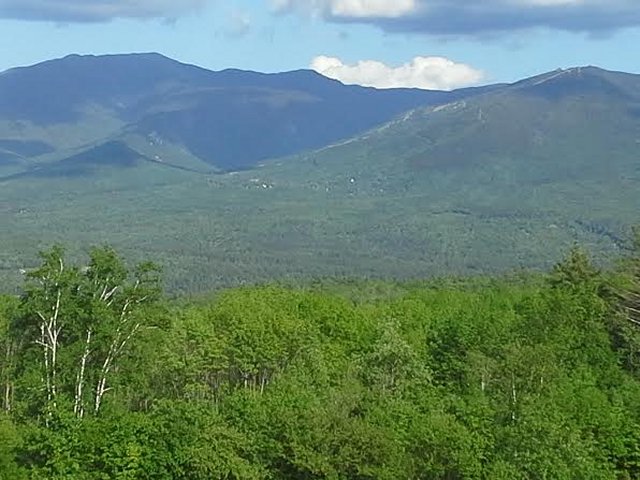
Lilac and Phlox Photographs
Bob Jensen at
Trinity University
This is the first day (in the middle of June) that our furnace did not run
It's been a cold and delayed springtime --- the lupines and lilacs bloomed very
late
I've been so busy planting that I don't have any new pictures to show you
So I will show you some pictures from last year that are almost exactly like it
appears outside today
The world in front of my desk changed from white to green
The white specks you see are an alpine village known as
Mittersill
You can see parts of the ski trails leading to the top of Cannon Mountain

The phlox are in full bloom, and I've planted some of my New Guinea Impatiens
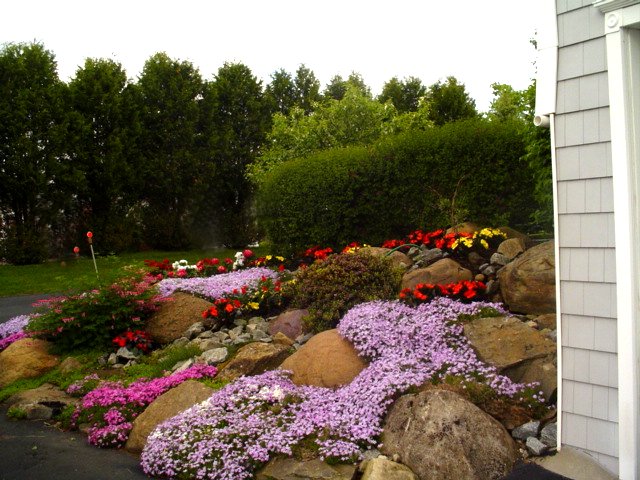
Our bleeding hearts are also having a good springtime
It seems that Sugar Hill's famous lupine
bloom later each year, perhaps due to cool weather
But the aromatic lilacs are in full bloom
This bush beside our back deck was damaged in the heavy snow that fell on
Memorial Day of 2013
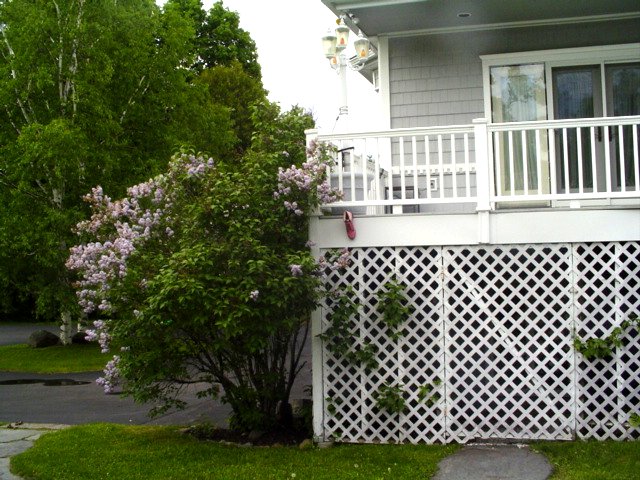
This is a large lilac bush on the golf course south of my barn
This is most likely a composite bush made up of both lavender and white blossoms
The large and small bees are all over the lilacs, but I see more bumble bees
than honey bees
Our cottage sits in place of where there was once a large resort hotel --- Scroll down
to cottage history
http://www.trinity.edu/rjensen/Pictures.htm
Our barn is one of the few resort buildings not torn down in 1973.
In the 1800s our barn was the power house that generated electric power for the
resort
The corner of our barn is visible in the picture below
Erika didn't want me to take this
picture beside a young lilac bush
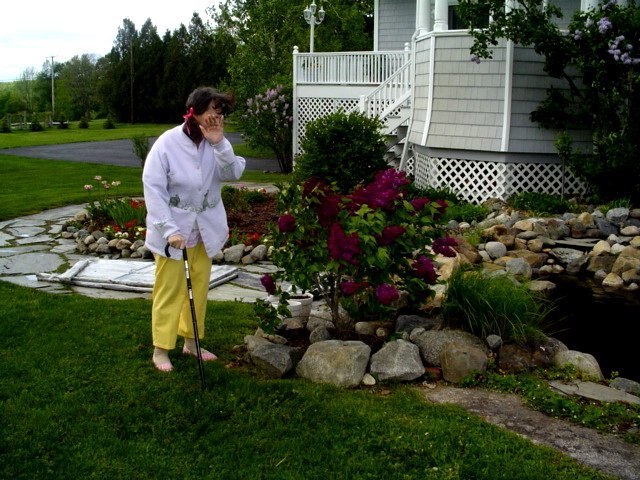
Lilac --- http://en.wikipedia.org/wiki/Lilac
Syringa vulgaris (lilac or common lilac) is a species of flowering plant in the olive family Oleaceae, native to the Balkan Peninsula, where it grows on rocky hills.[1][2][3] This species is widely cultivated as an ornamental and has been naturalized in other parts of Europe (UK, France, Germany, Italy, etc.) as well as much of North America. It is not regarded as an aggressive species, found in the wild in widely scattered sites, usually in the vicinity of past or present human habitations.
Description
Syringa vulgaris is a large deciduous shrub or multi-stemmed small tree, growing to 67 m (2023 ft) high, producing secondary shoots ("suckers") from the base or roots, with stem diameters of up to 20 cm (8 in), which in the course of decades may produce a small clonal thicket.[7] The bark is grey to grey-brown, smooth on young stems, longitudinally furrowed and flaking on older stems. The leaves are simple, 412 cm (25 in) and 38 cm broad, light green to glaucous, oval to cordate, with pinnate leaf venation, a mucronate apex and an entire margin. They are arranged in opposite pairs or occasionally in whorls of three. The flowers have a tubular base to the corolla 610 mm long with an open four-lobed apex 58 mm across, usually lilace to mauve, occasionally white. They are arranged in dense, terminal panicles 818 cm (37 in) long. The fruit is a dry, smooth brown capsule, 12 cm long, splitting in two to release the two winged seeds.[1][8] Garden history
Lilacs both Syringa vulgaris and S. Χ persica the finer, smaller "Persian lilac", now considered a natural hybrid were introduced into European gardens at the end of the sixteenth century, from Ottoman gardens, not through botanists exploring the Balkan habitats of S. vulgaris.[9] The Holy Roman Emperor's ambassador, Ogier Ghiselin de Busbecq, is generally credited with supplying lilac slips to Carolus Clusius, about 1562. Well-connected botanists, like the great herbalist John Gerard, soon had the rarity in their gardens: Gerard notes that he had lilacs growing in very great plenty in 1597, but lilacs were not mentioned by Shakespeare,[10] and John Loudon was of the opinion that the Persian lilac had been introduced into English gardens by John Tradescant the elder.[11] Tradescant's Continental source for information on the lilac, and perhaps ultimately for the plants, was Pietro Andrea Mattioli, as one can tell from a unique copy of Tradescant's plant list in his Lambeth garden, an adjunct of his Musaeum Tradescantianum; it was printed, though probably not published, in 1634: it lists Lilac Matthioli. That Tradescant's "lilac of Mattioli's" was a white one is shown by Elias Ashmole's manuscript list, Trees found in Mrs Tredescants Ground when it came into my possession (1662):[12] "Syringa alba".
In the American colonies, lilacs were introduced in the eighteenth century. Peter Collinson, F.R.S., wrote to the Pennsylvania gardener and botanist John Bartram, proposing to send him some, and remarked that John Custis of Virginia had a fine "collection", which Ann Leighton interpreted as signifying common and Persian lilacs, in both purple and white, "the entire range of lilacs possible" at the time.[13] Cultivation
The lilac is a very popular ornamental plant in gardens and parks, because of its attractive, sweet-smelling flowers, which appear in early summer just before many of the roses and other summer flowers come into bloom.[14]
In late summer, lilacs can be attacked by powdery mildew, specifically Erysiphe syringae, one of the Erysiphaceae.[15] There is no fall color and the seed clusters have no aesthetic appeal.
Common lilac tends to flower profusely in alternate years, a habit that can be improved by deadheading the flower clusters after the color has faded and before seeds, few of which are fertile, form. At the same time twiggy growth on shoots that have flowered more than once or twice can be cut to a strong, outward-growing side shoot.
It is widely naturalised in western and northern Europe.[8] In a sign of its complete naturalization in North America, it has been selected as the state flower of the state of New Hampshire, because it "is symbolic of that hardy character of the men and women of the Granite State".[16] Additional hardiness, for Canadian gardens, was bred for in a series of S. vulgaris hybrids by Isabella Preston, who introduced many of the later-blooming varieties, whose later-developing flower-buds are better protected from late spring frosts; the Syringa x prestoniae hybrids range primarily in the pink and lavender shades.
Continued in article
My neighbor to the north has a long row of old lilac bushes that were probably
part of the original resort
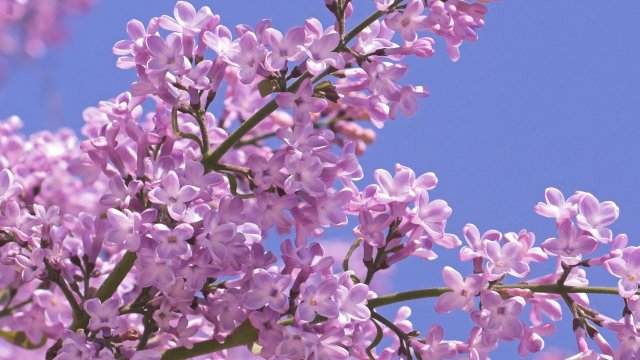
Although I prefer the English lilacs we have several of the even more
sweet-smelling French lilac bushes
Note where we had to cut out an old and large American cranberry bush that did
not survive our hard winter of 2014
I hung a geranium basket on the old stump
This is how it looked outside my desk a few months ago.
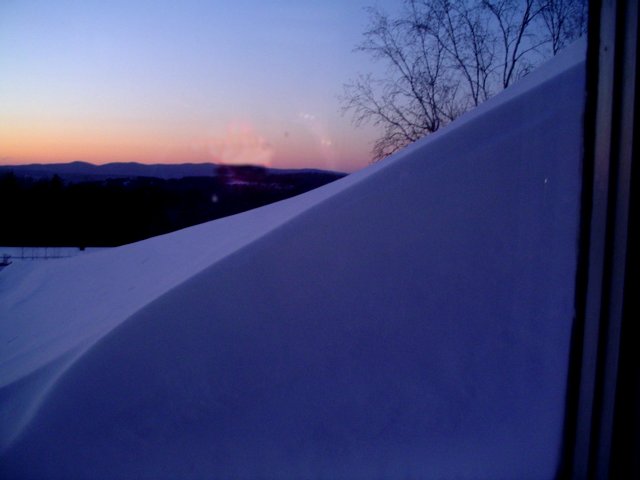
In the picture below you can see a couple bags of soil that I had left over
after planting our flower gardens
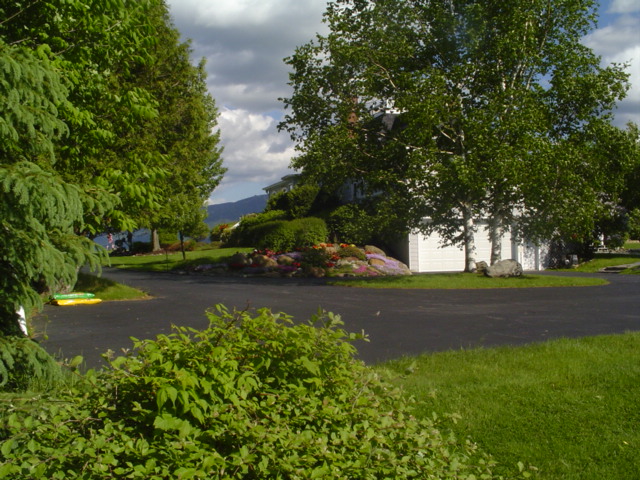
When Lilacs Last in the Dooryard Bloom'd
http://en.wikipedia.org/wiki/When_Lilacs_Last_in_the_Dooryard_Bloom%27d
Also see
http://en.wikipedia.org/wiki/Last_Looks_at_the_Lilacs
More of Bob Jensen's Favorite Photographs and Stories ---
http://www.trinity.edu/rjensen/Pictures.htm
What Goes on in a Garden? --- http://www.youtube-nocookie.com/embed/xHkq1edcbk4?rel=0
On May 14,
2006 I retired from
Trinity University after a long and
wonderful career as an accounting professor in four universities. I was
generously granted "Emeritus" status by the Trustees of Trinity University. My
wife and I now live in a cottage in the White Mountains of New Hampshire ---
http://www.trinity.edu/rjensen/NHcottage/NHcottage.htm
Bob
Jensen's Blogs ---
http://www.trinity.edu/rjensen/JensenBlogs.htm
Current and past editions of my newsletter called New
Bookmarks ---
http://www.trinity.edu/rjensen/bookurl.htm
Current and past editions of my newsletter called
Tidbits ---
http://www.trinity.edu/rjensen/TidbitsDirectory.htm
Current and past editions of my newsletter called
Fraud Updates ---
http://www.trinity.edu/rjensen/FraudUpdates.htm
Bob Jensen's past presentations and lectures
---
http://www.trinity.edu/rjensen/resume.htm#Presentations
Our
address is 190 Sunset Hill Road, Sugar Hill, New Hampshire
Our cottage was known as the Brayton Cottage in the early 1900s
Sunset Hill is a ridge overlooking with
New Hampshire's White Mountains to the East
and Vermont's
Green Mountains to the West
Bob Jensen's Threads --- http://www.trinity.edu/rjensen/threads.htm
Bob Jensen's Home Page --- http://www.trinity.edu/rjensen/